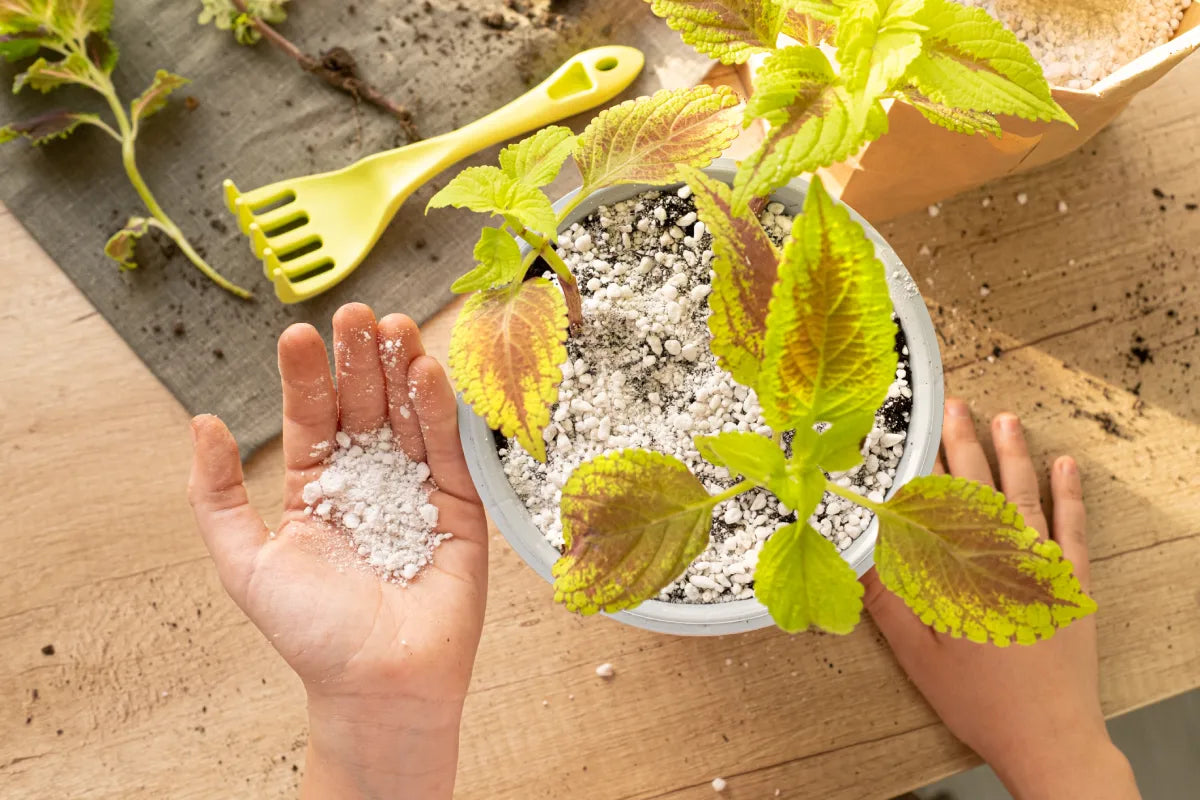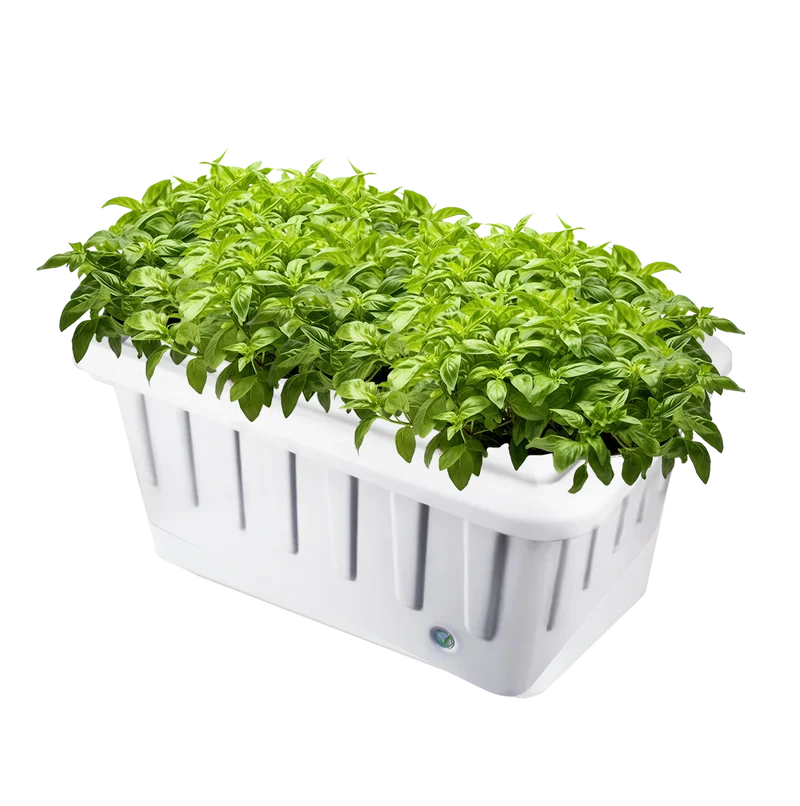
Calcium for Plants: Importance and Application Tips
The Role of Calcium in Plant Growth and Development
Calcium (Ca) is an essential macronutrient for plants, playing a critical role in various physiological and biochemical processes. It is vital for cell wall structure, membrane stability, enzyme activity, and signaling pathways. A deficiency in calcium can lead to significant growth issues and reduced crop yields. This comprehensive guide will explore the importance of calcium for plants, the symptoms of calcium deficiency, sources of calcium, and best practices for calcium fertilization.
Importance of Calcium for Plants
1. Cell Wall Structure
Calcium is a crucial component of plant cell walls. It contributes to the formation and stabilization of pectin, a structural polysaccharide that binds cells together. This function is vital for maintaining cell integrity and strength. Without adequate calcium, cell walls become weak, leading to compromised plant structure and increased susceptibility to diseases and physical damage.
2. Membrane Stability
Calcium plays a key role in stabilizing cell membranes. It interacts with phospholipids and proteins in the cell membrane, helping to maintain its structural integrity. This stability is essential for controlling the movement of ions and molecules in and out of cells, which is critical for nutrient uptake, water regulation, and overall cellular function.
3. Enzyme Activity
Many enzymes in plants require calcium as a cofactor for their activity. These enzymes are involved in various metabolic processes, including carbohydrate metabolism, protein synthesis, and hormone regulation. Calcium-dependent enzymes play a role in the activation of other enzymes, ensuring the smooth functioning of metabolic pathways necessary for plant growth and development.
4. Signaling Pathways
Calcium acts as a secondary messenger in numerous signaling pathways within plants. When plants encounter environmental stresses such as drought, high salinity, or pathogen attack, calcium ions are released into the cytoplasm. This release triggers a cascade of signaling events that activate stress response mechanisms. Therefore, calcium is crucial for plants to perceive and respond to environmental challenges effectively.
Symptoms of Calcium Deficiency
Calcium deficiency can manifest in various ways, affecting both the visible parts of the plant and its physiological functions. Common symptoms include:
- Tip Burn: One of the most recognizable symptoms of calcium deficiency is tip burn, where the edges of young leaves turn brown and necrotic. This condition is often seen in crops like lettuce and cabbage.
- Blossom End Rot: This disorder commonly affects fruits such as tomatoes, peppers, and melons. The blossom end of the fruit develops a water-soaked appearance that eventually turns brown and sunken, leading to reduced fruit quality and marketability.
- Poor Root Development: Calcium-deficient plants often exhibit poor root growth and development. This can lead to reduced nutrient and water uptake, further exacerbating the deficiency and affecting overall plant health.
- Stunted Growth: General stunting of the plant, with smaller leaves and stems, is a common symptom of calcium deficiency. This is due to the critical role of calcium in cell division and elongation.
- Increased Susceptibility to Disease: Weak cell walls and membranes resulting from calcium deficiency make plants more prone to pathogen invasion and disease. This can lead to a higher incidence of fungal and bacterial infections.
Sources of Calcium for Plants
1. Soil Minerals
Calcium is naturally present in soil minerals such as limestone, gypsum, and dolomite. These minerals gradually release calcium ions into the soil solution, where they can be absorbed by plant roots. The availability of calcium from soil minerals depends on factors such as soil pH, texture, and organic matter content.
2. Organic Matter
Organic matter, including compost and manure, is an important source of calcium. As organic matter decomposes, calcium is released into the soil solution. Incorporating organic matter into the soil not only supplies calcium but also improves soil structure, water-holding capacity, and nutrient availability.
3. Calcium Fertilizers
Various calcium fertilizers are available to supplement soil calcium levels and ensure optimal plant growth. Common calcium fertilizers include:
- Lime (Calcium Carbonate - CaCO3): Lime is widely used to increase soil pH and supply calcium. It is especially beneficial for acidic soils that are deficient in calcium.
- Gypsum (Calcium Sulfate - CaSO4): Gypsum provides a readily available source of calcium and sulfur. It does not affect soil pH, making it suitable for use in neutral or alkaline soils.
- Calcium Nitrate (Ca(NO3)2): This fertilizer provides both calcium and nitrogen, essential nutrients for plant growth. It is highly soluble and quickly available to plants.
- Calcium Chloride (CaCl2): Calcium chloride is often used in foliar sprays to quickly address calcium deficiencies, particularly in fruiting plants.
Best Practices for Calcium Fertilization
1. Soil Testing
Regular soil testing is essential to determine the existing calcium levels and to develop an appropriate fertilization plan. Soil tests provide information on soil pH, texture, organic matter content, and nutrient levels, helping to identify potential deficiencies or imbalances. Based on the results, appropriate calcium amendments can be selected and applied.
2. Balanced Fertilization
Calcium should be applied as part of a balanced fertilization program that considers the plant's overall nutrient requirements. Excessive application of one nutrient can lead to imbalances and negatively impact the uptake of other nutrients. It is important to apply calcium in conjunction with other essential nutrients to promote healthy plant growth.
3. pH Management
Soil pH has a significant impact on calcium availability. Acidic soils often have low calcium levels and may require lime application to raise the pH and improve calcium availability. Conversely, alkaline soils may have adequate calcium levels but could require gypsum to address other nutrient deficiencies or improve soil structure.
4. Timing and Method of Application
The timing and method of calcium application can influence its effectiveness. For instance, lime should be applied well in advance of planting to allow time for it to react with the soil and raise the pH. Gypsum can be applied during the growing season to address specific calcium deficiencies. Foliar sprays of calcium nitrate or calcium chloride can provide a quick remedy for acute deficiencies, particularly in fruiting plants.
5. Crop Rotation and Cover Crops
Crop rotation and the use of cover crops can help improve soil fertility and reduce the risk of calcium depletion. Deep-rooted cover crops can help mine calcium from deeper soil layers and make it available to subsequent crops. Legumes, for example, can fix atmospheric nitrogen, enhancing soil nitrogen levels and reducing the need for nitrogen fertilizers, which can indirectly benefit calcium availability.
Addressing Specific Crop Needs
Different crops have varying calcium requirements, and addressing these specific needs is crucial for optimal growth and productivity.
1. Tomatoes
Tomatoes are particularly susceptible to calcium deficiency, which often manifests as blossom end rot. To prevent this, ensure consistent soil moisture levels and avoid over-fertilizing with nitrogen, as this can reduce calcium uptake. Applying calcium nitrate or gypsum at planting and using calcium chloride sprays during fruit development can help mitigate deficiencies.
2. Leafy Greens
Leafy greens, such as lettuce and spinach, require adequate calcium for healthy leaf development. Tip burn is a common symptom of calcium deficiency in these crops. Maintaining consistent soil moisture, using calcium-rich amendments like gypsum, and applying foliar sprays can help ensure sufficient calcium availability.
3. Fruit Trees
Calcium is essential for fruit development and quality in trees like apples and citrus. Calcium deficiencies can lead to disorders such as bitter pit in apples. Soil applications of lime or gypsum and foliar sprays of calcium chloride during the growing season can help prevent these issues.
4. Brassicas
Brassica crops, including cabbage, broccoli, and cauliflower, require calcium for head formation and overall plant health. Calcium deficiencies can lead to poor head development and increased susceptibility to diseases. Soil testing, appropriate lime or gypsum application, and foliar sprays can help ensure adequate calcium levels.
Conclusion
Calcium is a vital nutrient for plant growth and development, playing crucial roles in cell wall structure, membrane stability, enzyme activity, and signaling pathways. Symptoms of calcium deficiency, such as tip burn, blossom end rot, poor root development, stunted growth, and increased disease susceptibility, highlight the importance of adequate calcium nutrition. To ensure sufficient calcium availability, it is essential to utilize sources such as soil minerals, organic matter, and calcium fertilizers. Implementing best practices for calcium fertilization, including soil testing, balanced fertilization, pH management, and addressing specific crop needs, can help optimize plant health and productivity. By understanding the importance of calcium and managing its availability, farmers and gardeners can promote robust plant growth and achieve higher-quality produce.



